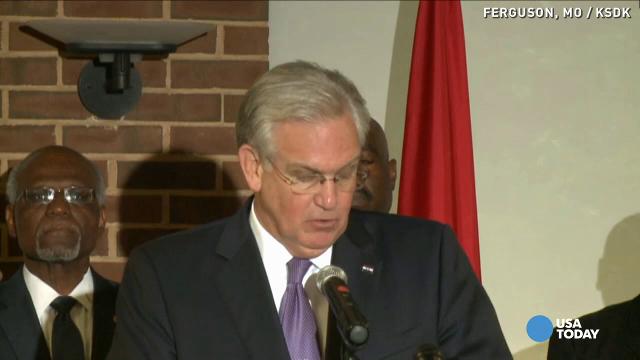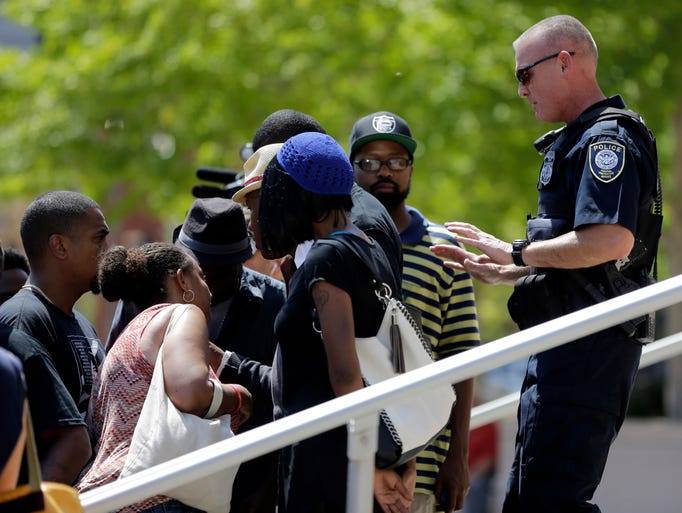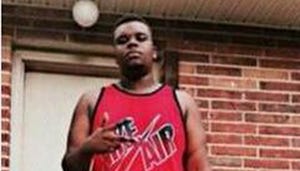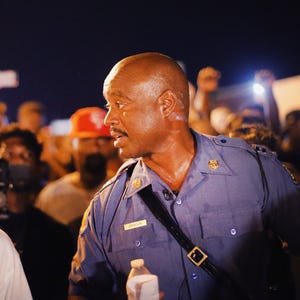WASHINGTON — Nearly two times a week in the United States, a white police officer killed a black person during a seven-year period ending in 2012, according to the most recent accounts of justifiable homicide reported to the FBI.
On average, there were 96 such incidents among at least 400 police killings each year that were reported to the FBI by local police. The numbers appear to show that the shooting of a black teenager in Ferguson, Mo., last Saturday was not an isolated event in American policing.
The reports show that 18% of the blacks killed during those seven years were under age 21, compared to 8.7% of whites. The victim in Ferguson was 18-year-old Michael Brown. Police have yet to identify the officer who shot him; witnesses have said the officer was white.
While the racial analysis is striking, the database it's based on has been long considered flawed and largely incomplete. The killings are self-reported by law enforcement and not all police departments participate so the database undercounts the actual number of deaths. Plus, the numbers are not audited after they are submitted to the FBI and the statistics on "justifiable" homicides have conflicted with independent measures of fatalities at the hands of police.
About 750 agencies contribute to the database, a fraction of the 17,000 law enforcement agencies in the United States.
University of South Carolina criminologist Geoff Alpert, who has long studied police use of deadly force, said the FBI's limited database underscores a gaping hole in the nation's understanding of how often local police take a life on America's streets — and under what circumstances.
''There is no national database for this type of information, and that is so crazy," said Alpert. "We've been trying for years, but nobody wanted to fund it and the (police) departments didn't want it. They were concerned with their image and liability. They don't want to bother with it.''
Alpert said the database can confirm that a death has occurred but is good for little else.
"I've looked at records in hundreds of departments,'' Alpert said, "and it is very rare that you find someone saying, 'Oh, gosh, we used excessive force.' In 98.9% of the cases, they are stamped as justified and sent along.''
Despite those flaws, the FBI records remain the most complete nationwide accounting of people killed by the police.
The International Association of Chiefs of Police, the nation's largest group of police officials, has maintained that police use of force is rare. Citing data gathered by the Bureau of Justices Statistics in 2008, the IACP said less than 2% of the 40 million people who had contact with police reported the use of force or threatened use of force.
"In large part, the public perception of police use of force is framed and influenced by the media depictions which present unrealistic and often outlandish representations of law enforcement and the policing profession,'' the group said in a 2012 report.
And in a written statement Thursday, IACP President Yost Zakhary said the group "remains committed to studying police use of force issues.''
But University of Nebraska criminologist Samuel Walker, who has conducted extensive research on police force issues, called the lack of a national repository tracking such incidents a "major failure'' of the criminal justice system.
That doesn't mean that all incidents have escaped scrutiny. In addition to federal and state prosecutions of individual officers, seven U.S. police departments have been the subject of reviews by the Justice Department's Civil Rights Division in the wake of fatal police shootings since 2010, according to Justice records.
Albuquerque and New Orleans represented the most egregious cases during that time, while separate reviews have involved Puerto Rico, Portland, Miami, Seattle and Newark.
Earlier this year, street protests erupted in Albuquerque following the police shooting death of James Boyd, a homeless man who had a history of violent outbursts and mental instability.
A month later, the Justice Department issued a scathing review of the local police department, concluding that of 20 fatal shootings resulting in death between 2009 and 2012, a "majority ... were unconstitutional.''
"I'll be the first one to say that they put their life on the line every day, but they're killing innocent people and kids," said Christal Kennerson, whose nephew was shot and killed by an Albuquerque police officer in 2012.
Her nephew, Daniel Tillison, 31, was unarmed at the time. Police said the officer was responding to an anonymous report of someone selling stolen stereo parts. An investigation by local prosecutors found that when the officer approached him, Tillison put his car in gear and tried to drive away, colliding with the officer's patrol car. The officer, Martin Smith, said he saw Tillison holding a black object; fearing that it was a gun, he shot Tillison once, killing him. Prosecutors concluded that the shooting was justified.
Kennerson said nothing her nephew had done justified killing him. "Just because my nephew wasn't an angel didn't mean he needed to die," she said.
An Austin police officer shot Billie Mercer's unarmed son in the back of the neck last year. The oldest of his three children, now 13, still asks when he'll be able to see his father again, she said.
"I already feel like I have a hole in my heart, and to see my grandkids missing him like that," she said, going quiet for a moment. "That detective, he just doesn't know what he did to our family."
Mercer's son, Larry Jackson, Jr., was killed after he tried to open the door of an Austin bank that had been robbed earlier that day. A detective, Charles Kleinert, tried to question him, but Jackson fled. Kleinert — who at one point got a ride from a passerby — pursued him under a nearby bridge, where he shot Jackson in the back of the neck. A grand jury indicted Kleinert on a manslaughter charge in May. It charged that Kleinert was trying to strike Jackson while he was holding his gun, "recklessly" causing his death. Jackson died under the bridge.
Watching news reports of other police shootings "hurts, and something needs to be done about it. The police are protecting their own when they know they're wrong," Mercer said.
Beyond the work of Justice's Civil Rights Division, which is largely focused on individual agencies, Walker said a national repository of police deadly force cases is needed to define the scope of the problem for the public.
"The reason there isn't one is because the information is often embarrassing for police departments,'' Walker said.
"People should be able to log into a database and identify where their own department stands on this,'' he said, adding that the information supplied annually to the FBI on police officers who are killed or assaulted in the line of duty is far more detailed.






































































































































































No comments:
Post a Comment